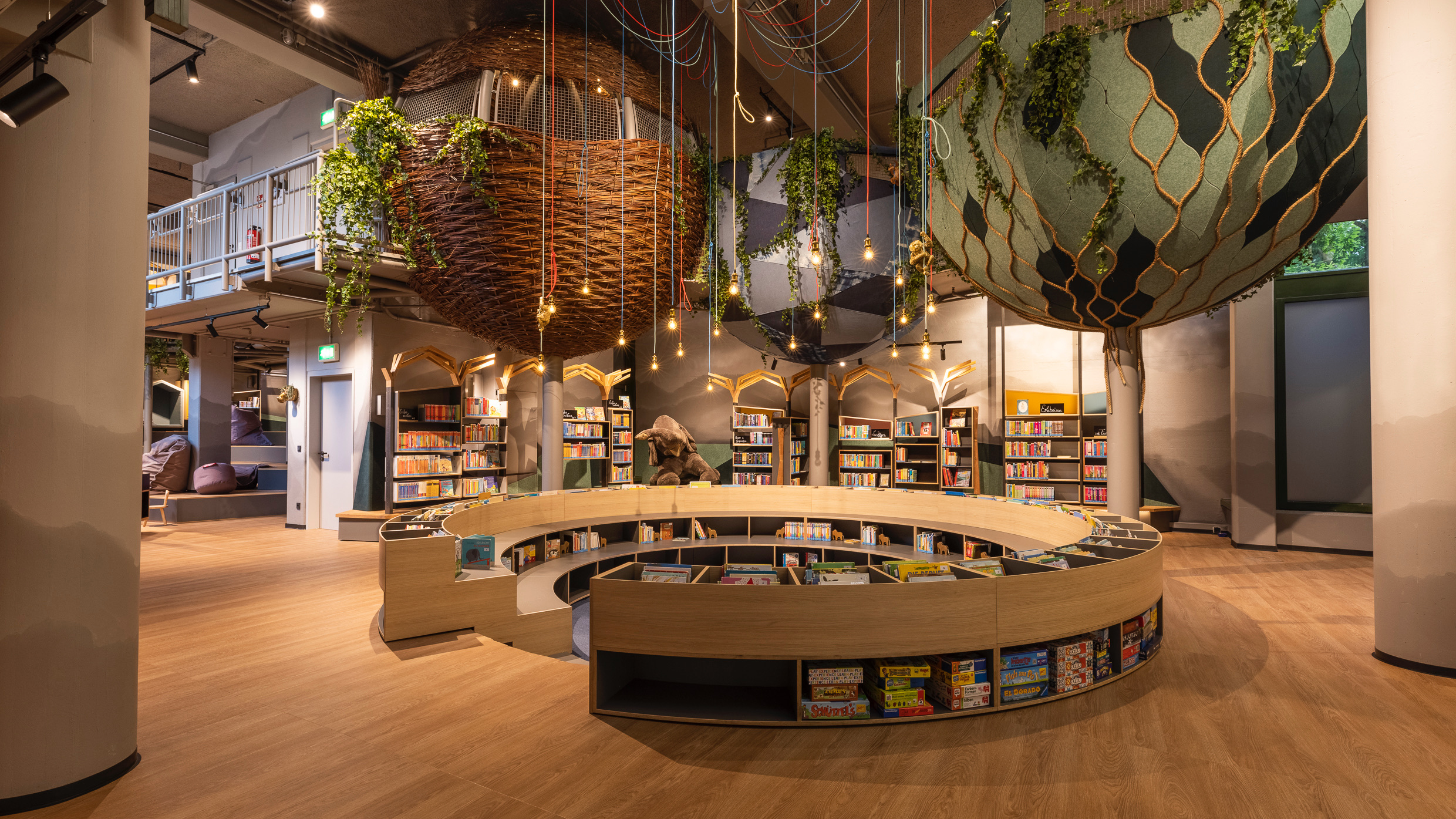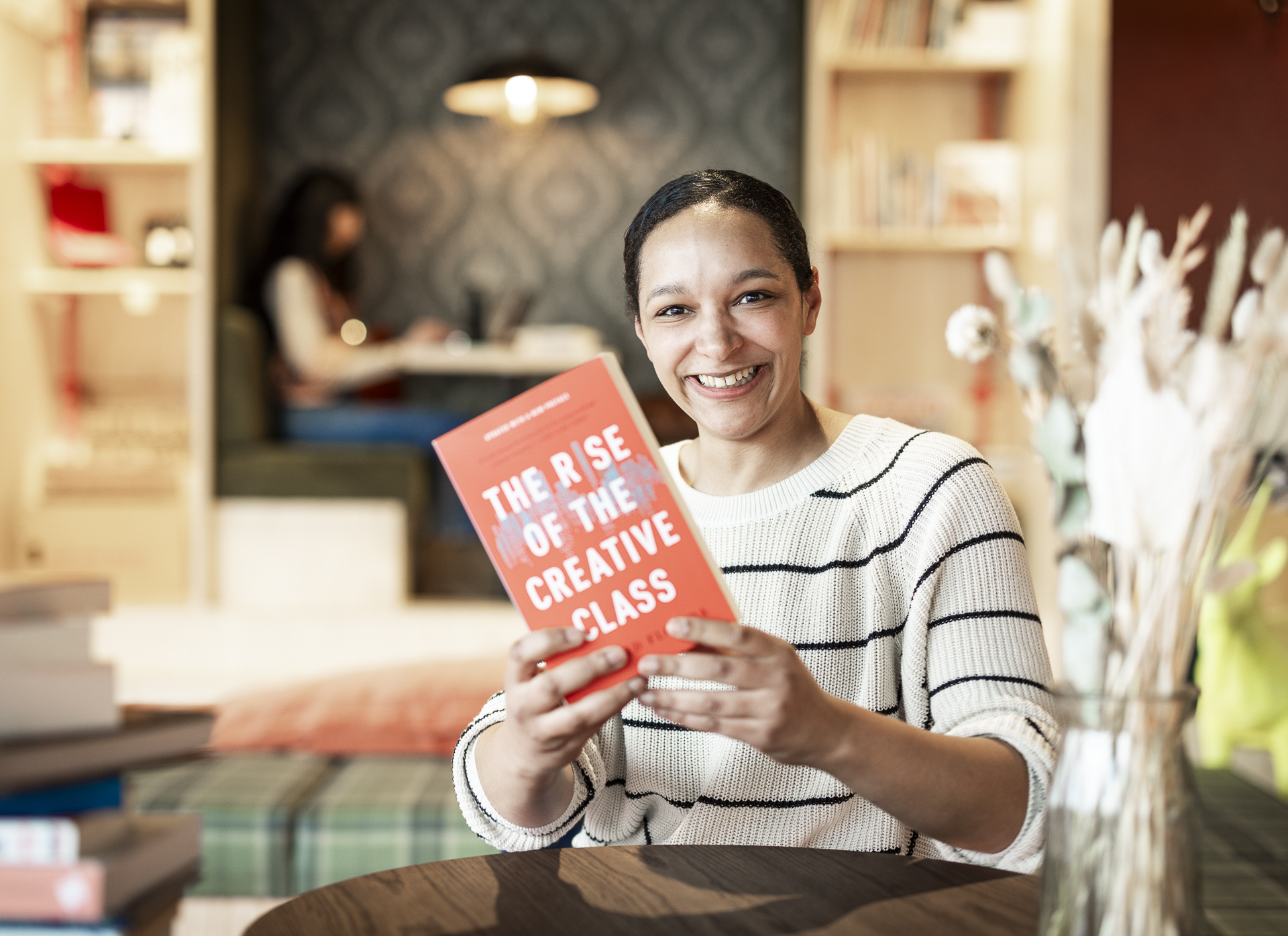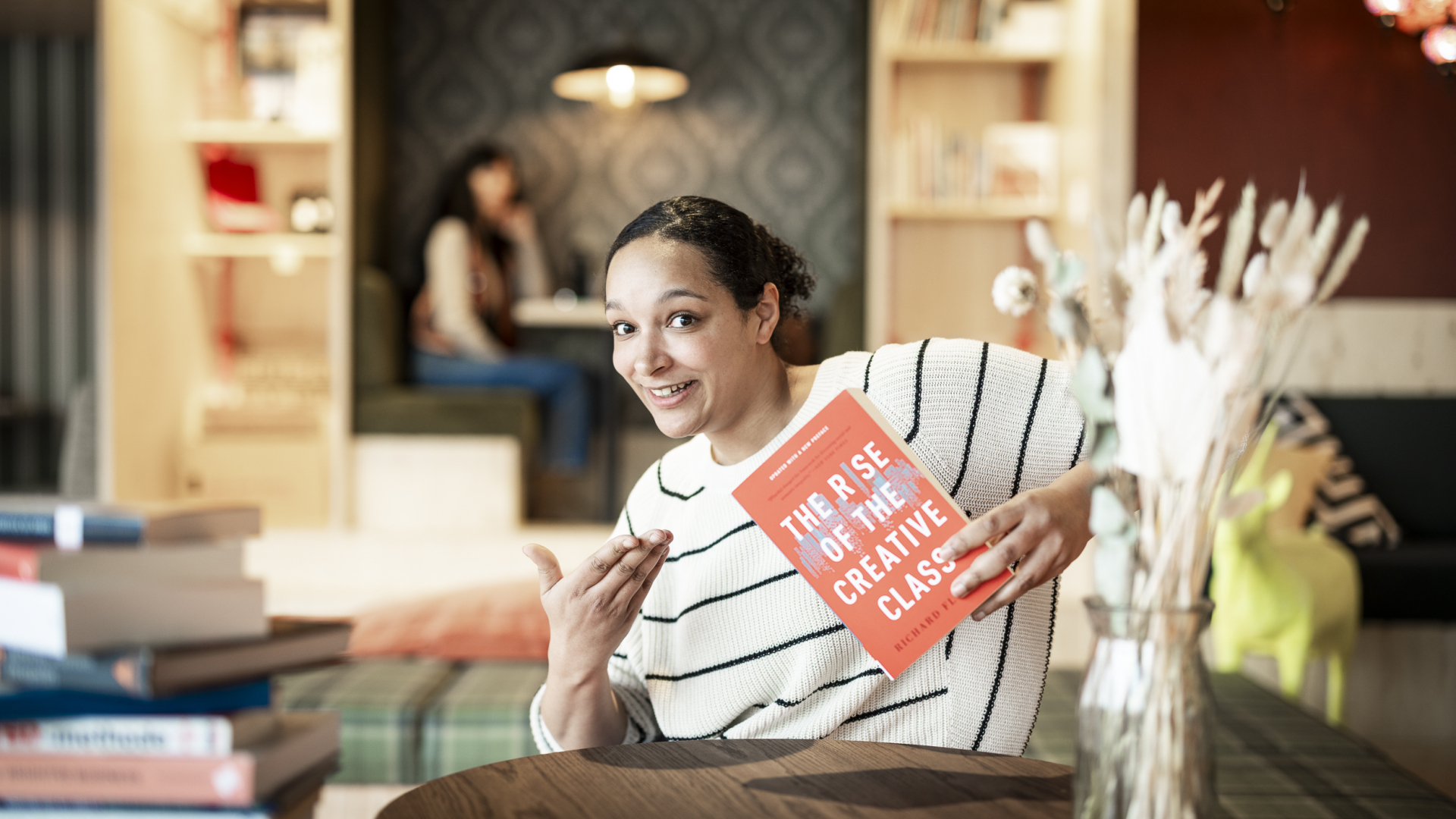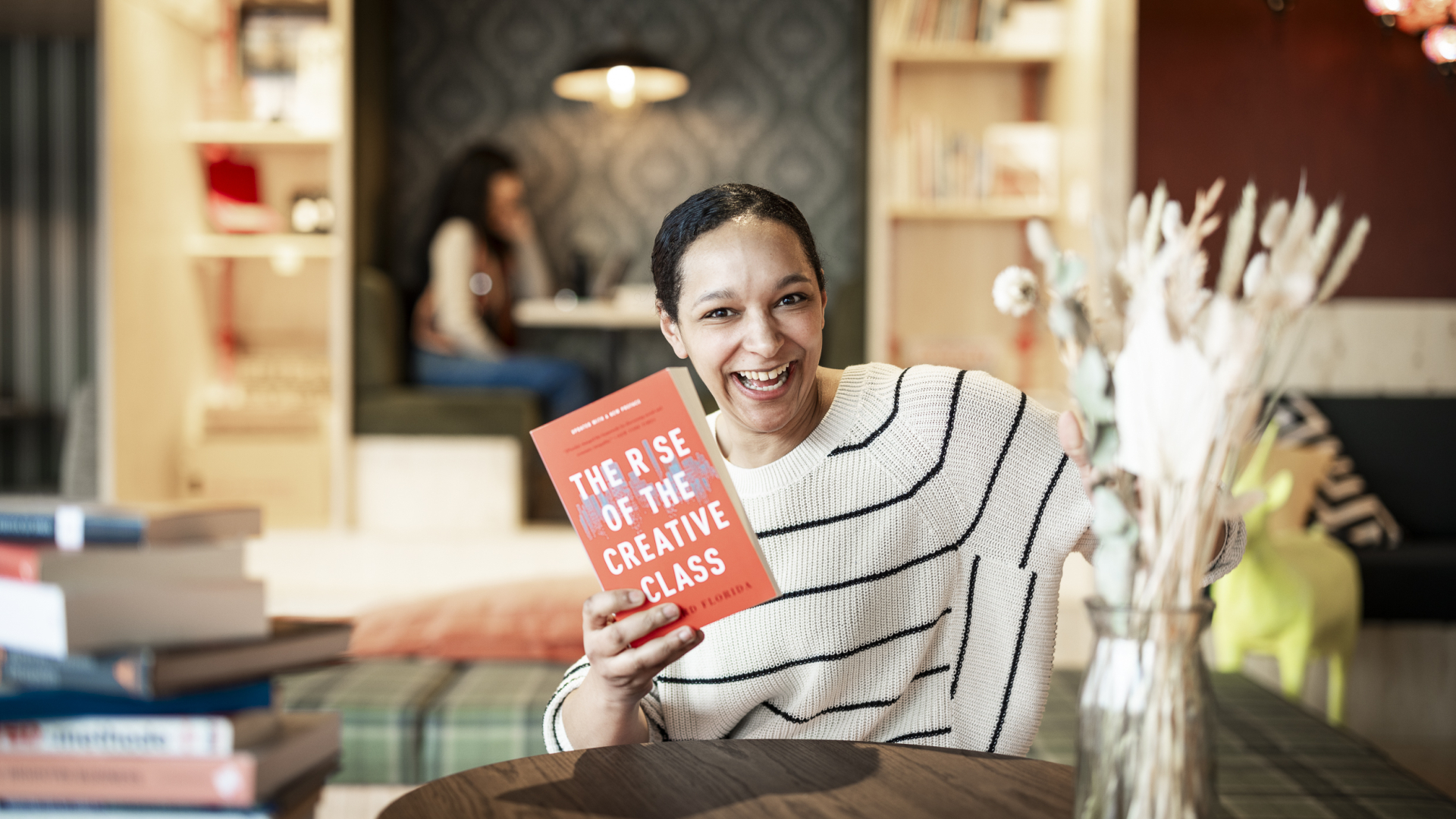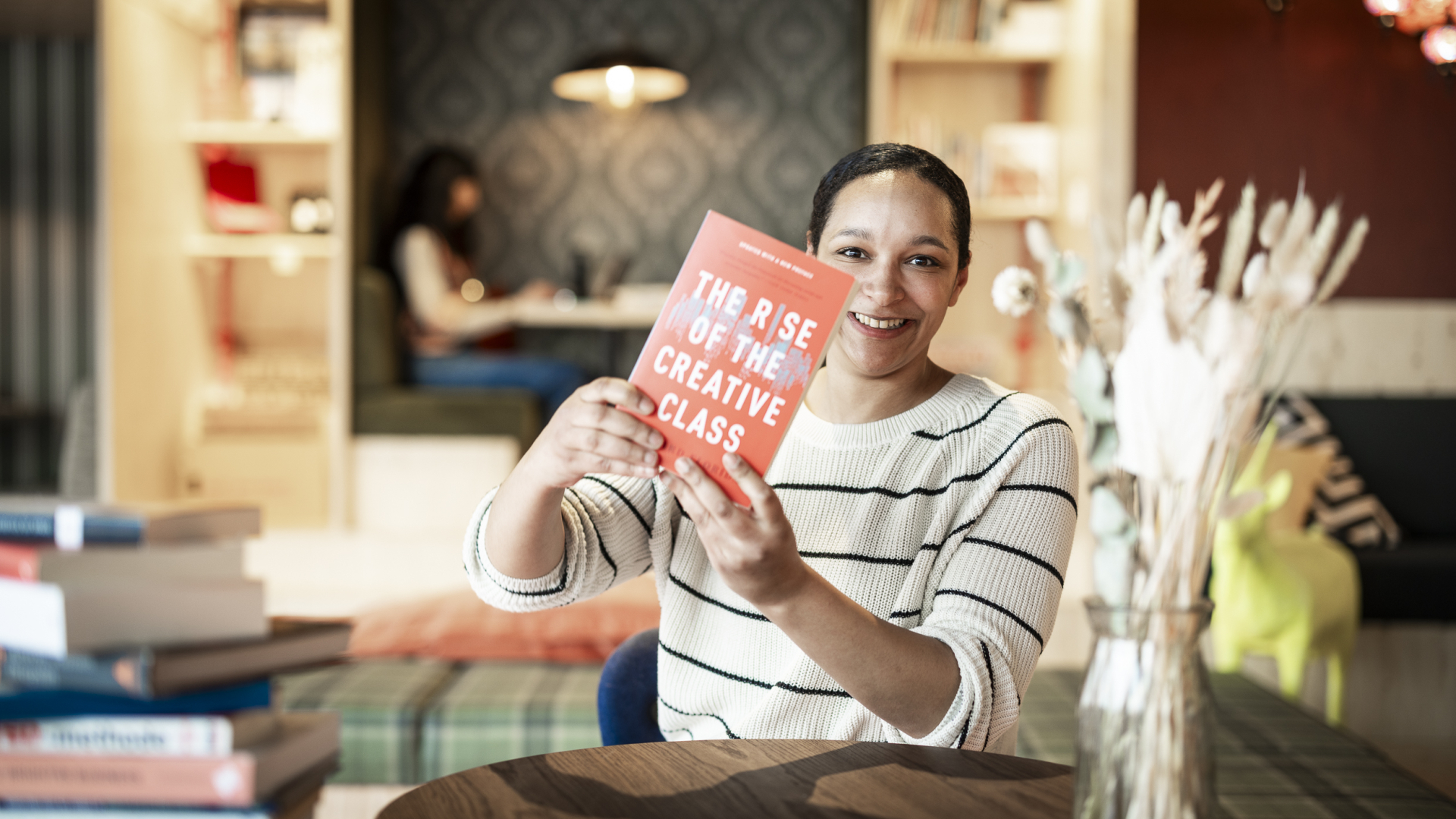The Poetics of Space
Book pick by Ellie Blower | Interior Designer
In ‘The Poetics of Space’, philosopher Gaston Bachelard explores the depths of the human imagination by examining the meaning and experience of domestic spaces. Through philosophical and literary analysis, Bachelard explores the poetic power of our intimate environments, from dreamy nooks to vast landscapes. This classic work invites readers to explore the psychological and symbolic dimensions of architecture and offers deep insight into how we (can) feel at home in the world around us.
Despite its rather heavy content, why does Ellie highly recommend this book?
“I must admit that I have not read the entire book because of the abundance of philosophical reflections it contains. Nevertheless, I use this book as a valuable resource for spatial thinking, as a sort of dictionary. It was required reading during my first year of college, and it quickly proved to be a veritable bible for spatial design. Gaston Bachelard traverses every nook and cranny of the house, exploring each section in detail. This makes the book a valuable companion to have nearby at all times, especially during moments of creative drought!”
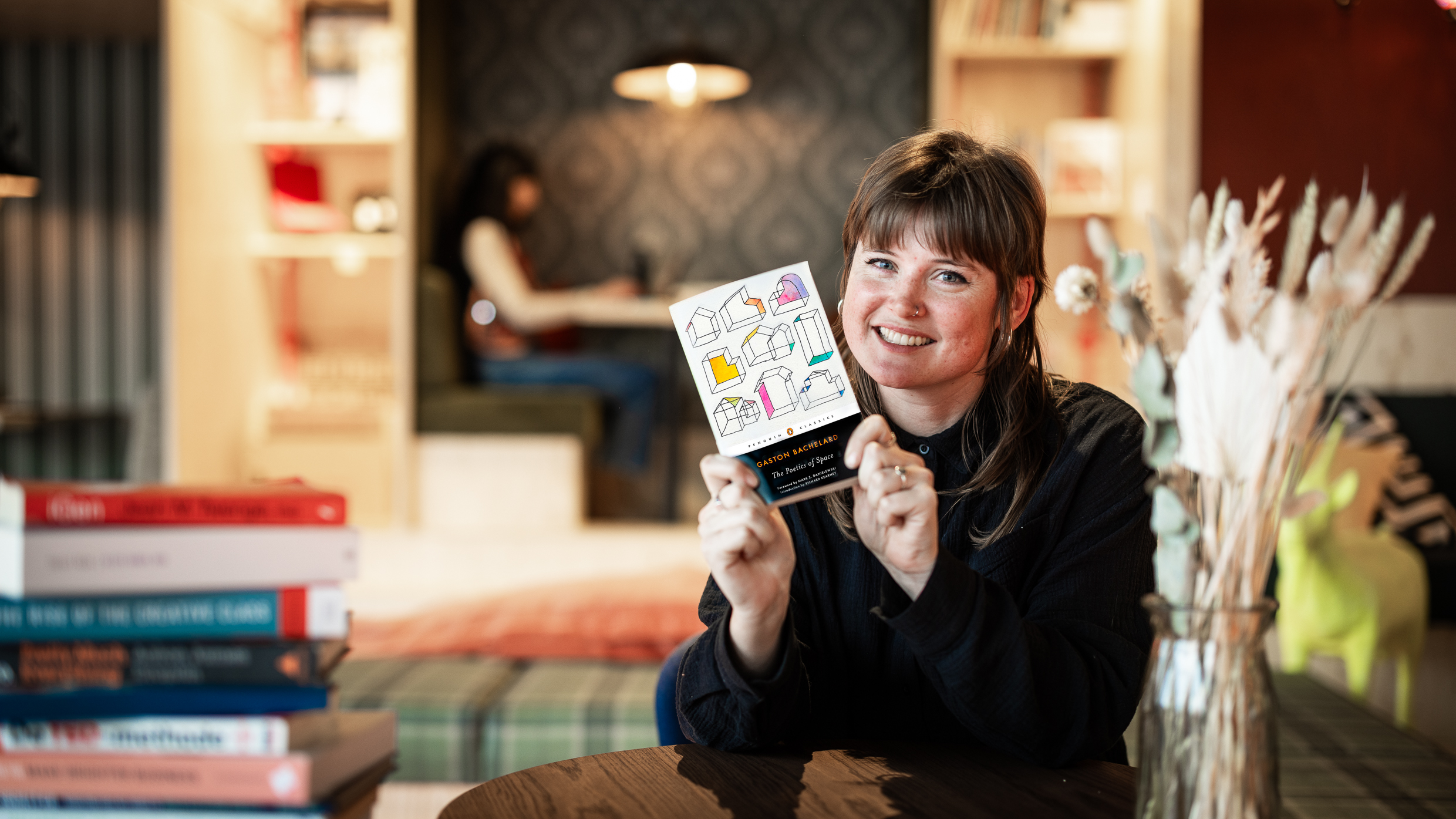
2. Aaron James Draplin
Pretty Much Everything
Book pick by Sjoerd Rekker | Head of Brand & Graphic Designer
Aaron James Draplin is a graphic designer, with major clients ranging from Nike to Ford Motors. His book provides a glimpse into his creative process. It includes a comprehensive collection of his projects, from logos to posters to packaging, and offers insight into Draplin’s myriad sources of inspiration and methods. An inspiring resource for graphic designers and design enthusiasts, it shows how a personal and bold approach to design can lead to striking and effective creations.
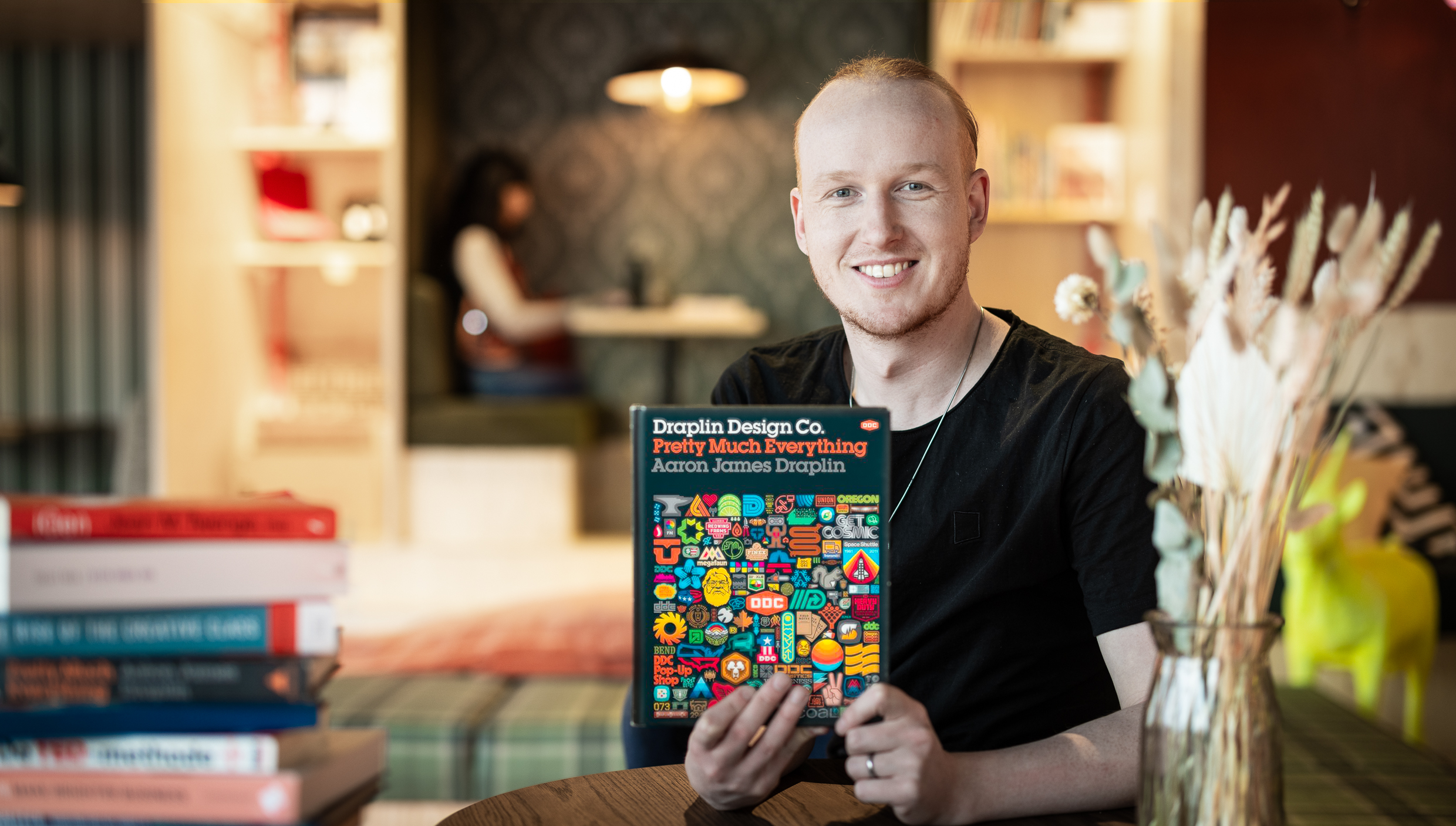
Why can Sjoerd, relate to just about everything in ‘Pretty Much Everything’?
“This book, my first graphic design book, was given to me as a gift after my internship in 2017. It is truly inspiring to read how Draplin got off to a great start in his career and approaches his design process. The book is packed with stories, funny anecdotes, designs and development processes. What particularly touched me is his willingness to take on projects without immediate financial reward. By following his passion, he built valuable connections that later led to great opportunities.
I also see this at includi. Of course, we’re a company that offers commercial services, but the financial aspect isn’t what drives us. The social importance of inclusive spaces propels us above all else; it motivates us to go the extra mile. Draplin’s relentless work ethic inspires me. Sitting still is not an option. I believe taking action is the path to growth. There have been times when I got stuck and gained new insights and inspiration, thanks in part to the case studies in this book.”
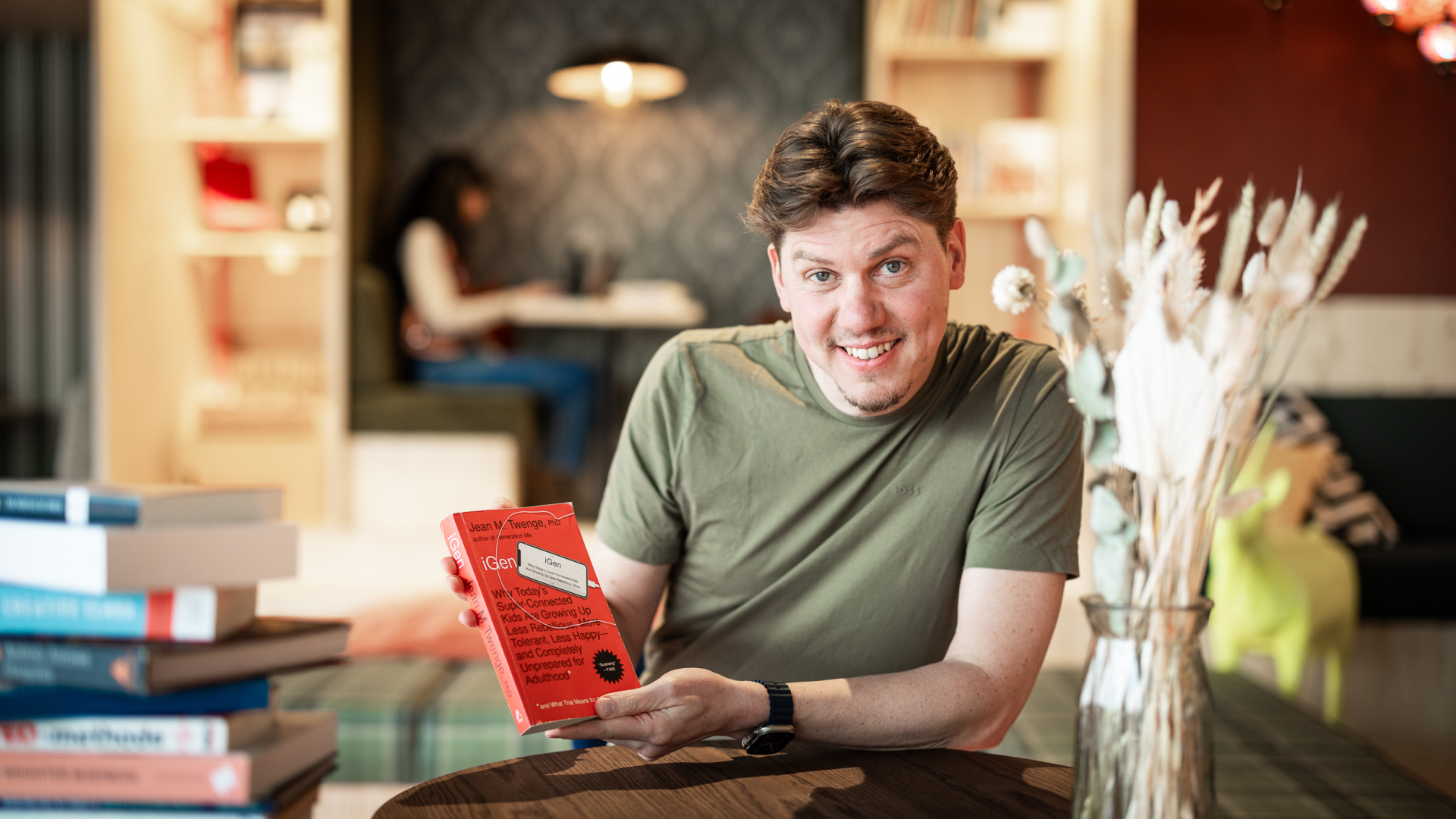
iGen
Book pick by Niels van Veen | Operational Director & Architect
The psychologist analyzes how technology affects their lives, from their mental health and sleep patterns to their social relationships and worldview. She describes the challenges iGen faces, such as the pressure to constantly be online, and offers insights into how this generation evolves and relates to the world around them.
What makes ‘iGen’ a real eye-opener for Niels?
“This photo was taken on my birthday (1980, Xennial, the last generation without internet), two months after the death of my father (1949, Babyboomer, first post-war generation, emergence of social innovations) and two months before the birthday of my eldest son (2014, iGen). Three generations each with their own typical characteristics.
My son’s generation is described by Jean Twenge, which is a real eye-opener when it comes to the effects for the first generation growing up in a fully digital and mobile world. And the effects are huge. A must-read for anyone with a smartphone! While digitization brings benefits that we at includi certainly embrace, we consider physical meeting places more important now than ever because of increasing social remoteness. Especially for the i-generation, such places are crucial to get them out of their digital bubble, teach them how to deal with diversity, discuss and simply have fun together. Jean Twenge inspires us at includi to create places that are better than home, cooler than school and more exciting than the best pub. And with success, because libraries, for example, are gaining popularity among iGen! This gives hope and confidence for the future.”
The Rise of the Creative Class
Book pick by Nadine Free | Interior Designer
Sociologist Richard Florida examines the rise and impact of what he calls the “creative class”, composed of professionals in sectors such as art, design, technology and science. He reasons that this creative class plays a crucial role in the economic growth of cities and regions. He argues for an environment that embraces diversity and provides equal opportunities for all members of society. Cities that embrace these values, according to Florida, will be able to develop a thriving cultural scene and a vibrant economy.
Why does Nadine feel that spending time with this book is a million-dollar idea?
“What stuck with me the most is that Richard Florida emphasizes the importance of a mix of old and new architecture and sufficient green spaces to land the ‘creative class’ in urban areas.His research on ‘time hunger’ is also relevant to my work at includi, where we focus on ‘time well-spent’ in third places. Florida analyzes how cities that facilitate a better work-life balance and a stimulating creative environment become more attractive to the creative class and therefore more dynamic and economically prosperous. In other words, his book examines the rise of the creative class, emphasizes inclusivity and advocates a revaluation of time, with a focus on a balanced lifestyle. A hugely fascinating book!”
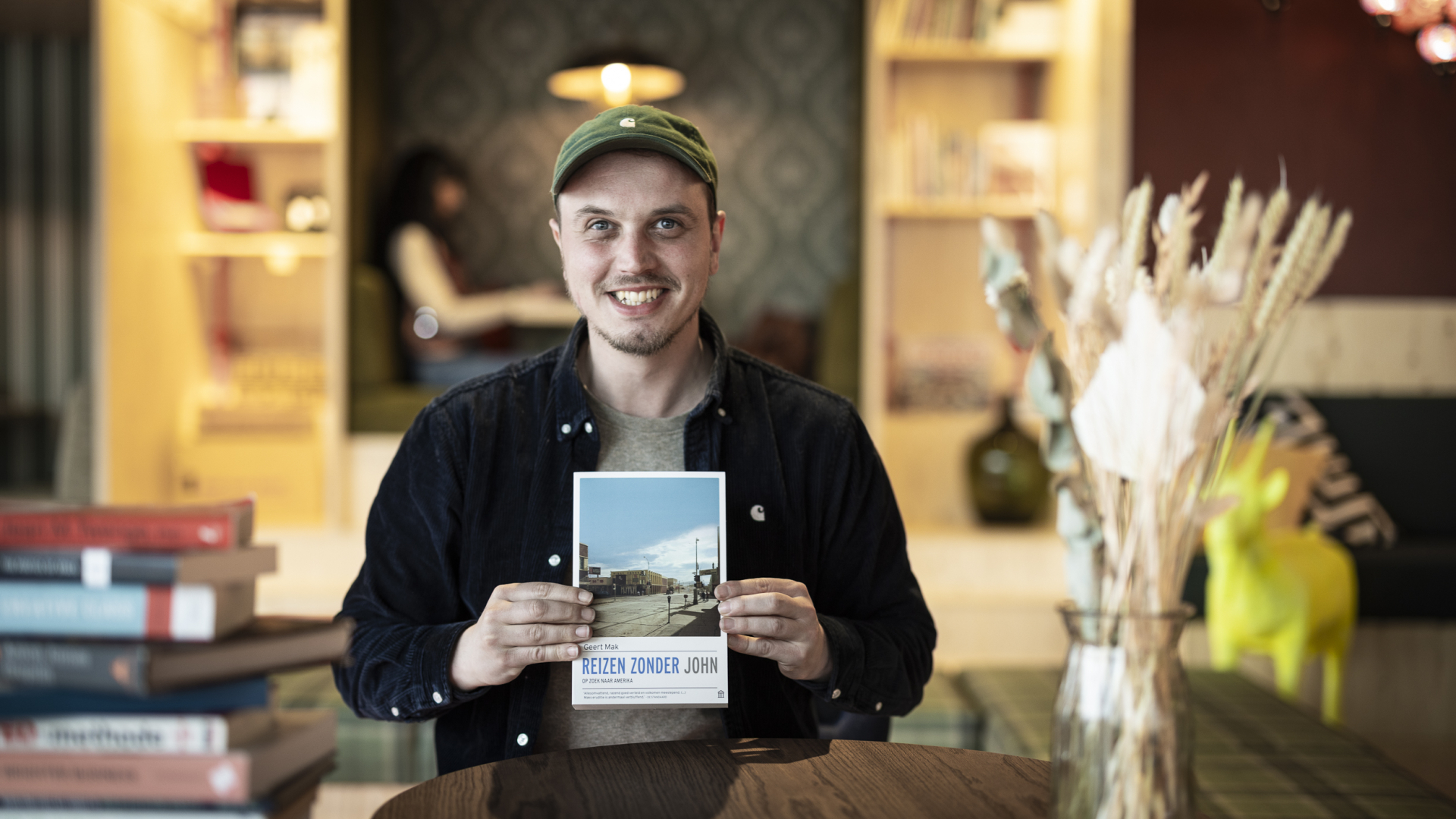
Reizen zonder John
Book pick by Thijs Alberts | Interior Designer
Mak makes the same journey through the United States as Steinbeck, but in contemporary times. During his journey, he explores how America has changed since Steinbeck’s adventure, reflecting on themes of identity, culture, politics and the American dream.
Why did Thijs go on an audio adventure with this book?
“During my cycling vacation to Berlin, I opted for an audiobook instead of a traditional book, and ‘Traveling Without John’ turned out to be the perfect companion. It fits perfectly with my fascination with contemporary history.
Although it focuses on American history, the book offers numerous parallels to the Netherlands. I find it fascinating how Geert Mak describes a decline that many of us recognize, with the ‘everything used to be better’ sentiment becoming stronger and stronger. It seems as if many communities are crumbling without anything coming in return. A changing society calls for new kinds of meeting places, such as third places, that strengthen communities and bring people back together.”
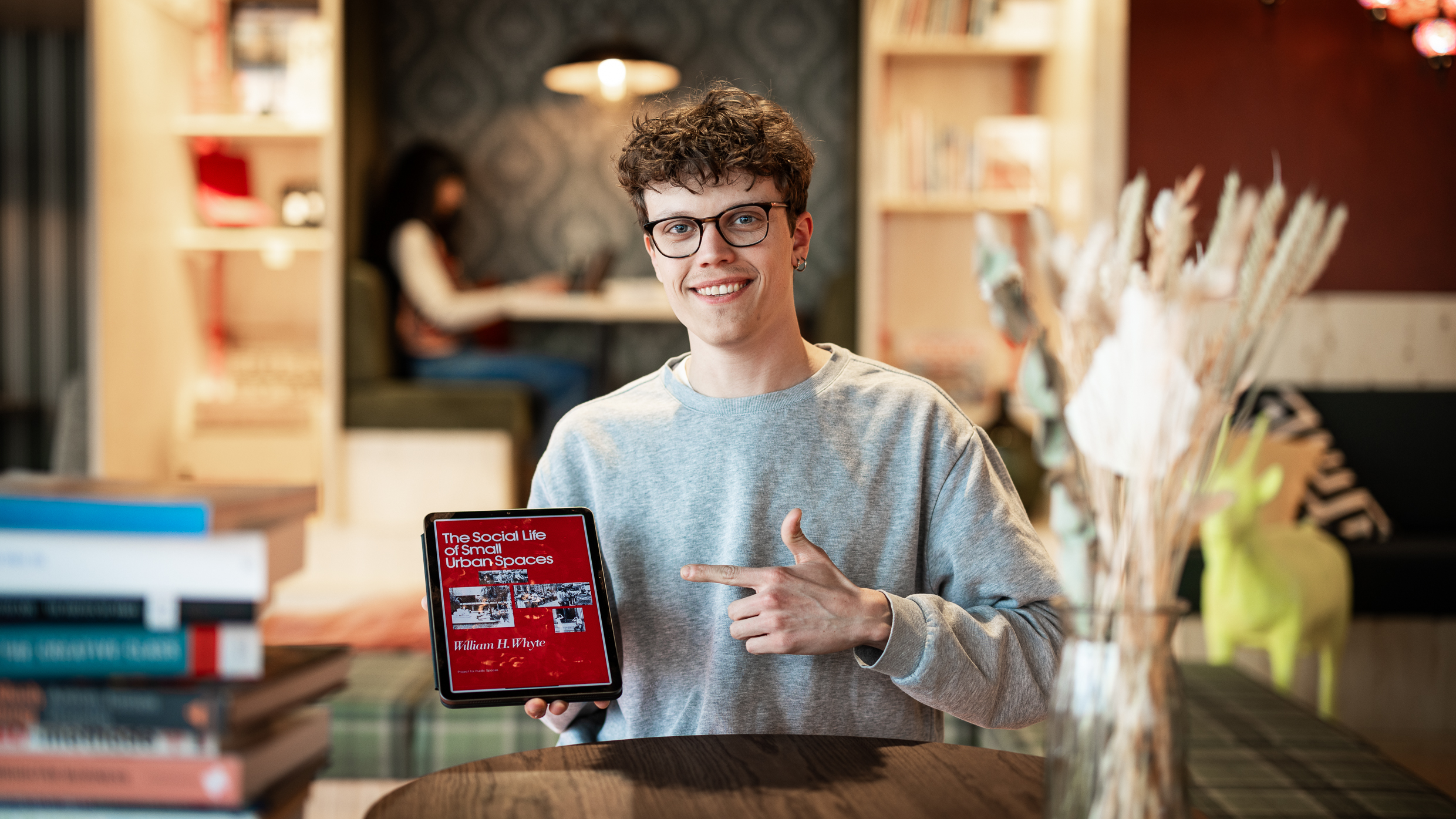
The Social Life of Small Urban Spaces
Book pick by Jaap Bouwman | Social Geographer
This classic on placemaking explores the dynamics and uses of public spaces in urban areas and how these spaces influence social interaction, community building and city life. The documentary of the same name evokes both nostalgic feelings and recognition. The work shows that the quality of public spaces is crucial to promoting social interaction, community building and vibrant urban life.
What makes this book so immensely interesting according to Jaap?
“In this work, sociologist William H. Whyte applies a research method that I find very powerful: observing human behavior in public spaces. He analyzes 18 public places in Manhattan, New York, paying special attention to plazas. Although the work is somewhat older, most of his findings are still relevant and we can still use his insights.
Whyte’s approach, focused on understanding social dynamics in public spaces, is perhaps more important than ever. His focus on human interaction and how urban design affects it is inspiring to anyone involved in creating inclusive public places, including myself. While the specific designs and functions of these spaces change over time, the need for accessible and inviting public spaces where people can feel at ease remains unchanged.”
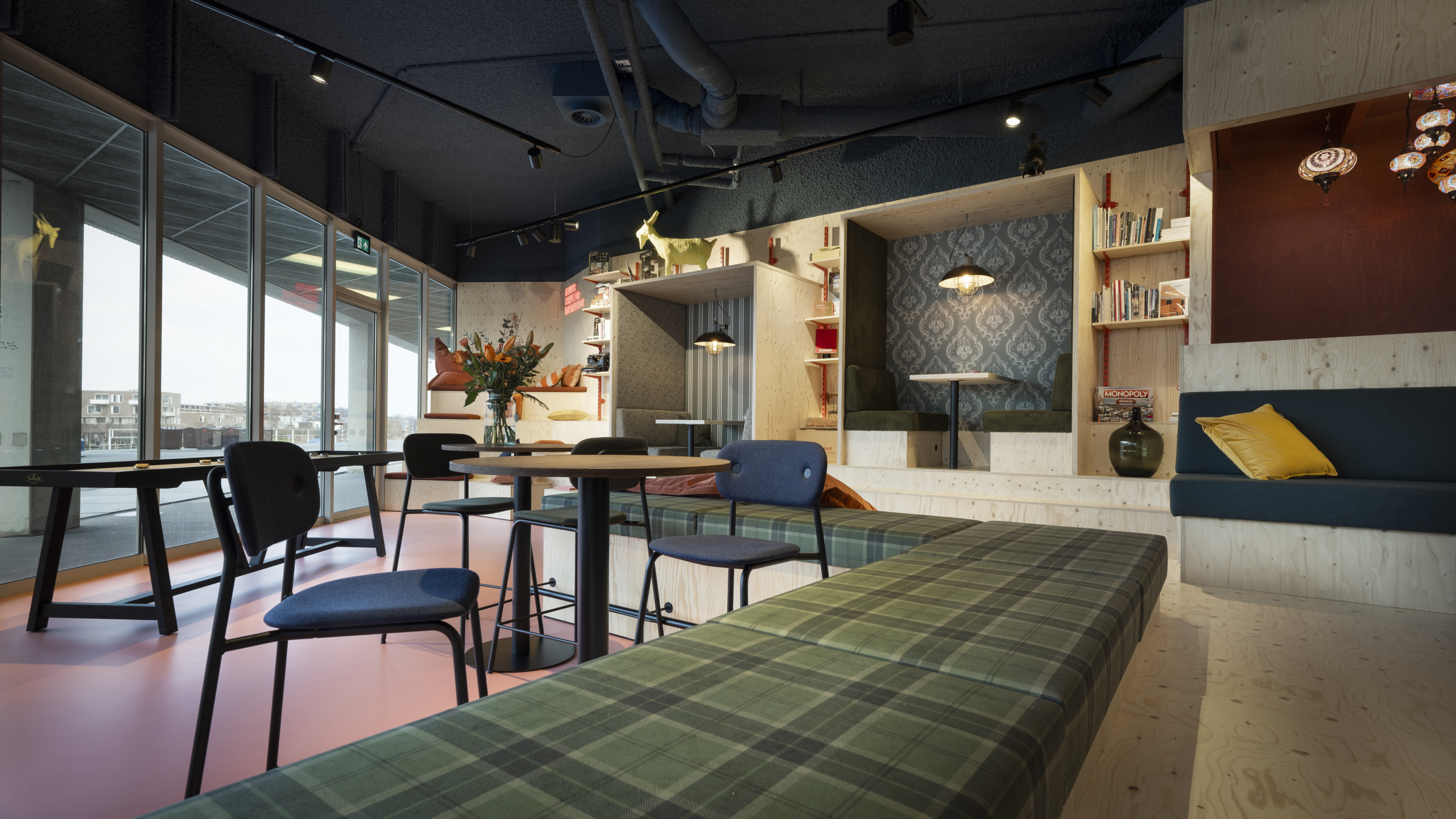
The need for imperfection
